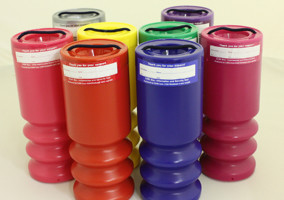Since the stories surrounding safeguarding and international aid broke in February, there’s been a question which it seems everyone wants to ask but no one is able to answer – how will it impact on charitable giving? This was put into sharper focus over the last week or so with speculation around whether it might have contributed to Sport Relief raising less money this time around than on previous occasions.
The answer to both is: nobody quite knows.Could the stories about international aid charities have influenced people who have given donations before to not reach for their phone this time around? Seems a possible hypothesis, but we’re dealing with suppositions rather than evidence. It’s more likely to be a number of contributory factors: Sport Relief adopted a new approach this year which may have been less familiar to viewers; people continue to be less likely to watch terrestrial TV compared to streaming services; and yes, perhaps, ‘charity’ stories in the press, had an effect.
With high-profile events last year (Grenfell, Manchester ‘One Love’ concert following the Arena) raising money I don’t think we can say that large-scale national fundraising campaigns no longer work, but perhaps they will be working in slightly different ways. The London Marathon is coming up on 22 April and it will be interesting to see how much the event will raise – for each of the last 11 years it has set a world record for the largest amount raised for an annual single day (£61.6m last year).
But what about charitable giving overall? Would seeing stories on safeguarding dominating the airways and newspaper headlines impact on charitable giving widely, outside of these more high-profile events? While we won’t get the overall actual figures until at least next year, the indicators so far show that levels of giving and trust in the charity are holding up.
CAF’s monthly tracker on trust in charities says that the levels in trust in charities in February 2018 were consistent with previous months, and while nfpSynergy’s research suggests a dip in trust, this seems to be specifically for international charities. I think it’s a bit like a ripple effect, the further that supporters associate a charity with a particular story the smaller the waves are – so Oxfam will be at the centre, with the international aid sector in the next band, and other charities quite far removed.
With our partners at the Institute of Fundraising we’ve been able to get greater insight into ‘real time’ figures and actual levels of donations and fundraising just recently. Regular giving donations through direct debits seem to be consistent (even marginally better) than they were this time last year – Rapidata, who process direct debits for more than 600 UK charities of all sizes and causes, report that the cancellation rate for February this year was 2.22 per cent compared to 2.78 per cent for the same period last year.
Rapidata has been monitoring regular giving trends since 2003 so we know these rates sit well within the expected cancellation cycle for this time of year indicating that people who give regular gifts to a whole range of charities are remaining loyal.
JustGiving say that donations through their site for February are up 5 per cent compared to last year, while Home Fundraising report that their sign up rate for door to door fundraising in Feb 18 was commensurate to Feb 17 (while also seeing a steady increase in March), while also not seeing a rise in any negative feedback about the charity sector as a whole or indeed Oxfam specifically, when engaging potential donors at the doorstep.
All of these figures come with their own caveats of course, (the fundraising activity won’t be exactly the same as last year, so can’t make direct comparisons), we don’t have laboratory conditions for exact comparisons so we will always be dealing with ‘this could mean’ rather than ‘this is definitely the case’ - it’s a bit like building up a paint by numbers picture, where each bit of data or insight helps us fill in the gaps and make out the scene a little more clearly.
From the information we’re seeing so far, it’s not doom and gloom for charity donations. Great fundraising is happening and people are continuing to give - as long as we have the former, we’ll always get the latter.
Daniel Fluskey is head of policy and external affairs at the Institute of Fundraising.
Civil Society Media would like to thank the Institute of Fundraising for their support with this article.
|












